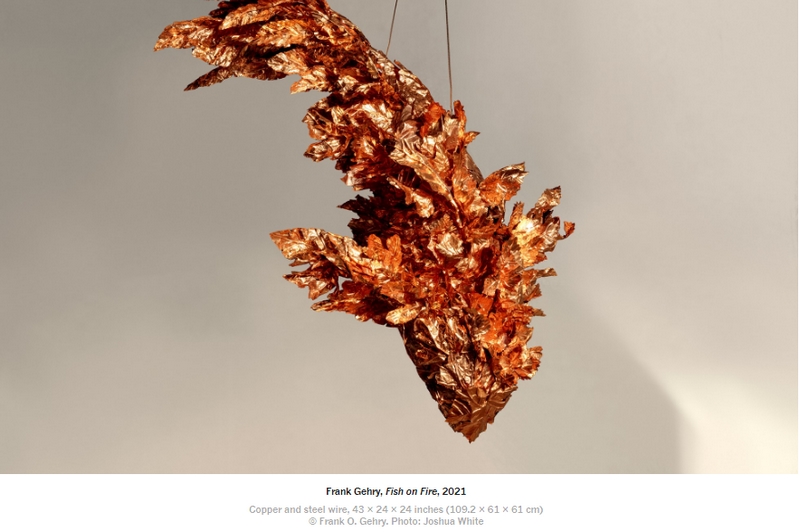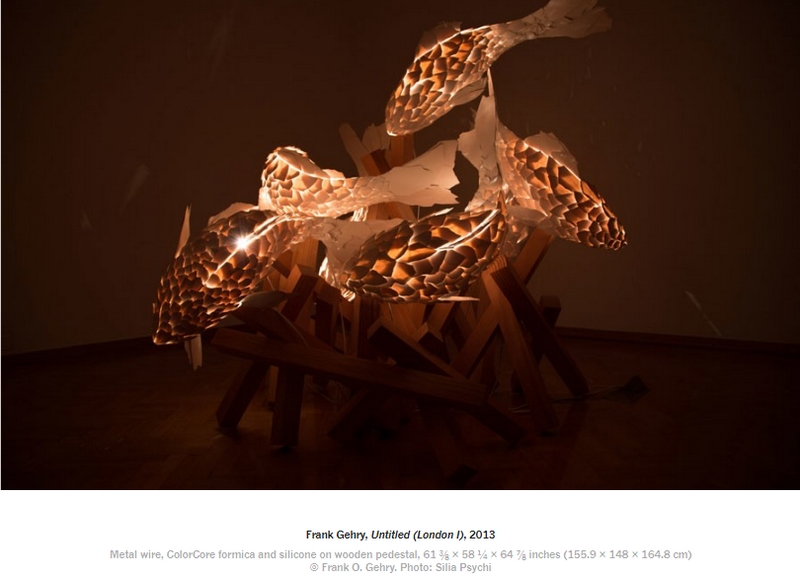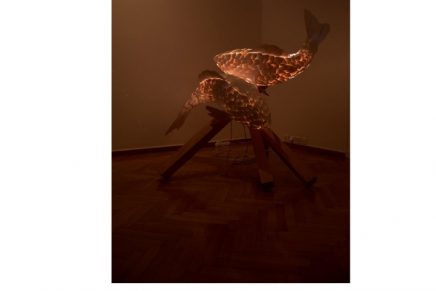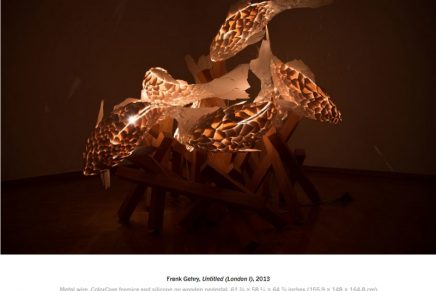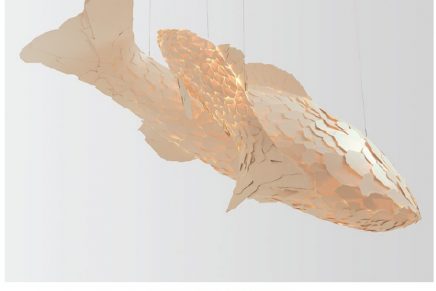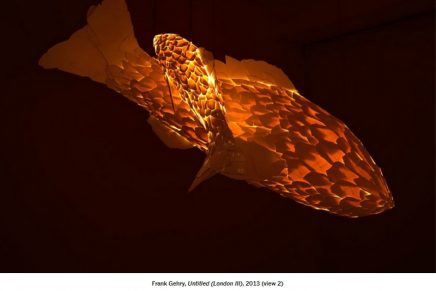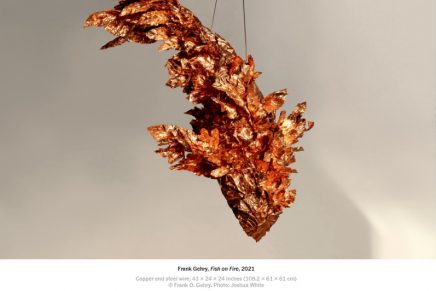Spinning Tales at Gagosian Beverly Hills – an exhibition of new work by renowned architect Frank Gehry
“When I built the first model of the fish, I saw in it the movement that I was looking for. It was startling that a static object could express motion in such a dynamic way.” – Frank Gehry.
Gagosian’s new Spinning Tales at Gagosian Beverly Hills, the exhibition of new work by renowned architect Frank Gehry, pairs large-scale elaborations on the Fish Lamps series with a new installation, Wishful Thinking (2021), and is Gehry’s eighth exhibition with the gallery since 1999.
Celebrated for his groundbreaking architectural designs, the Canadian-born American architect and designer Frank Gehry has also produced significant bodies of sculpture and furniture, from Easy Edges (1969–73) and Experimental Edges (1979–82)—chairs and tables made from layers of corrugated cardboard – to bentwood furniture items designed for Knoll (1989–92).
The Fish Lamps evolved from a 1983 commission by the Formica Corporation to utilize ColorCore, a type of plastic laminate. After accidentally breaking off a shard of the material, Gehry was inspired by its scale-like appearance; molding wire armatures into piscine forms, he affixed ColorCore fragments to them.
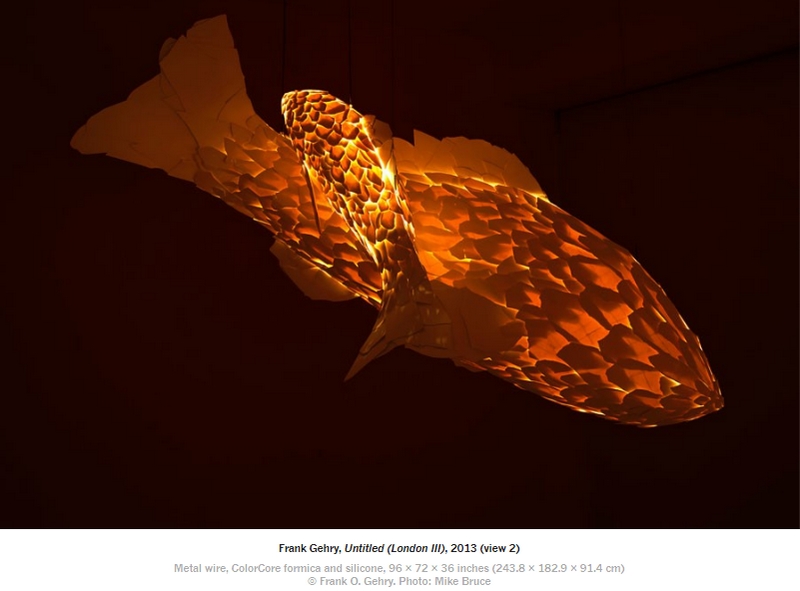
@Frank Gehry: Fish Lamps, an exhibition of Gehry’s animated and dynamic light sculptures; photo @gagosian.com; Photographer Mike Bruce
In the main gallery, three outsize, internally illuminated Fish Lamps sculptures are suspended from the ceiling in dynamic, twisting poses, as if swimming through water. In these works, Gehry has used polyvinyl and copper for the first time. These central forms are surrounded by lively, colorful sculptures that are more baroque in their ornamentation. While these sculptures are autonomous works, the “perfect form” of the creature that they emulate reappears throughout Frank Gehry’s architectural oeuvre, lending itself to the undulating profiles of buildings including the Guggenheim Bilbao, Spain (1997), and the Walt Disney Concert Hall, Los Angeles (2003).
Filling the upstairs gallery is the immersive installation Wishful Thinking, based on a scene from Alice’s Adventures in Wonderland. Frank Gehry renders the Mad Hatter’s tea party as a group of ten surreal figures, twice life-size. Fashioned from brilliantly painted metal, Gehry’s abstracted interpretations of Carroll’s original characters surround an internally lit table, the glowing heart of the scene. Three overlapping woven steel “tapestries” of trees evoke the episode’s forest setting, while a mirror on the opposite wall implicates the viewer. The crumpled surfaces of Wishful Thinking’s figures establish a new visual connection with some of Gehry’s best-known designs.
Frank Gehry was born in 1929 in Toronto, and lives and works in Los Angeles.
Read about Frank Gehry’s renovation and extension of the Philadelphia Museum of Art. Pritzker Architecture Prize-winning architect has designed new galleries and public spaces as part of a revamp of the Philadelphia Museum of Art in Pennsylvania.
- “FRANK GEHRY Spinning Tales” Exhibition at Gagosian Beverly Hills Museum
June 24–August 7, 2021
Gagosian Beverly Hills (456 North Camden Drive, Beverly Hills, ca 90210.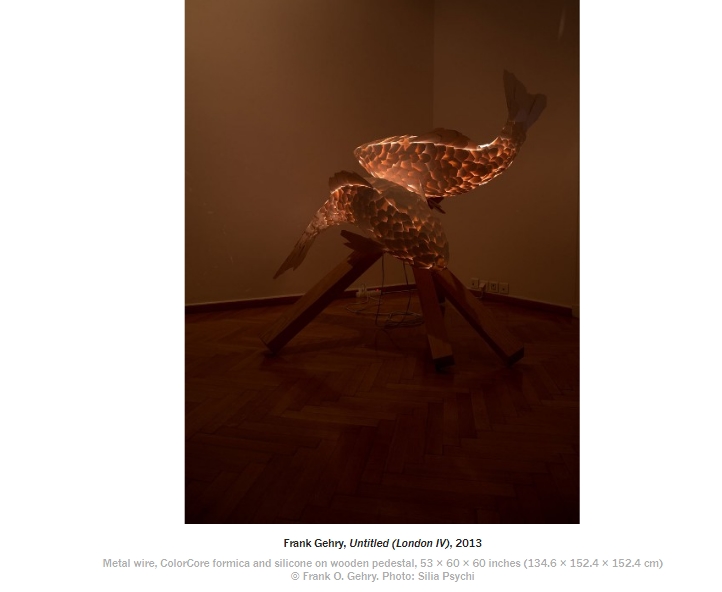
@Frank Gehry: Fish Lamps, an exhibition of Gehry’s animated and dynamic light sculptures; photo @gagosian.com; Photographer Silia Psychi
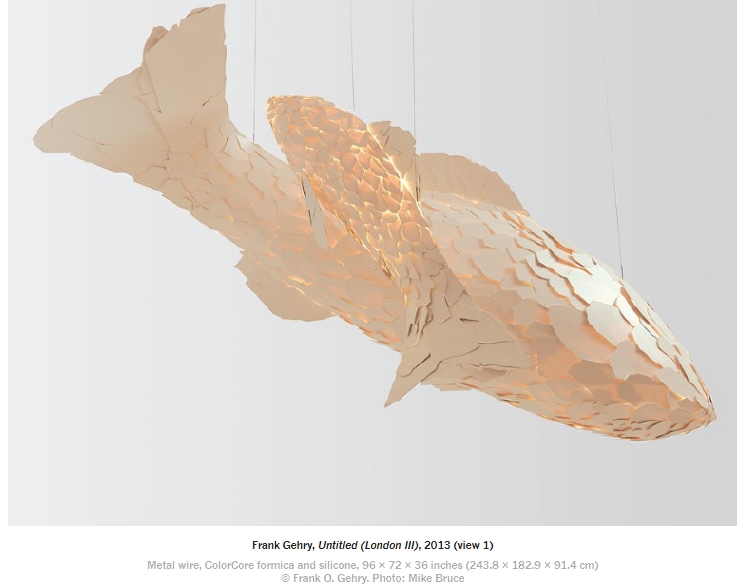
@Frank Gehry: Fish Lamps, an exhibition of Gehry’s animated and dynamic light sculptures; photo @gagosian.com; Photographer Mike Bruce

